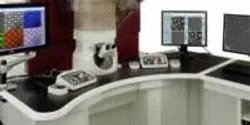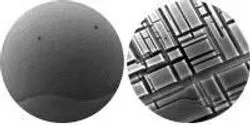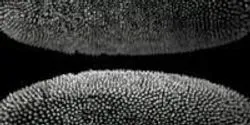Analytical Instruments

Opening new doors for biomedical and neuroscience research, Elizabeth Hillman, associate professor of biomedical engineering at Columbia Engineering and of radiology at Columbia University Medical Center (CUMC), has developed a new microscope that can image living things in 3D at very high speeds. In doing so, she has overcome some of the major hurdles faced by existing technologies, delivering 10 to 100 times faster 3D imaging speeds than laser scanning confocal, two-photon, and light-sheet microscopy.

JEOL USA and the University of California's Irvine Materials Research Institute (IMRI) have entered into a strategic partnership to create a premier electron microscopy and materials science research facility. The IMRI will serve as an interdisciplinary nexus for the study and development of new materials, enabling advances in solar cell, battery, semiconductor, biological science, and medical technologies.

Rust never sleeps. Whether a reference to the 1979 Neil Young album or a product designed to protect metal surfaces, the phrase invokes the idea that corrosion from oxidation—the more general chemical name for rust and other reactions of metal with oxygen—is an inevitable, persistent process. But a new study performed at the Center for Functional Nanomaterials (CFN) at the U.S. Department of Energy's (DOE) Brookhaven National Laboratory reveals that certain features of metal surfaces can stop the process of oxidation in its tracks.

Ames Laboratory scientists use genetic markers to discover the rhizosphere.

Scientists at the Department of Energy’s Oak Ridge National Laboratory have used advanced microscopy to carve out nanoscale designs on the surface of a new class of ionic polymer materials for the first time. The study provides new evidence that atomic force microscopy, or AFM, could be used to precisely fabricate materials needed for increasingly smaller devices.

Linda Wegley Kelly, PhD, a marine microbial ecologist in the Department of Biology at San Diego State University, talks to contributing editor Tanuja Koppal, PhD, about what has changed in the field since 2001, when she started working in the lab. While genomic and sequencing technologies have become easier and cheaper, the work on the bioinformatics side has now become more tedious in terms of the volume of data that needs to be analyzed. While systems for sample collection and storage have become convenient and customizable, the use of automation in microbiology remains fairly limited. Contamination still remains a cause for concern, and protocols have to be rigorously outlined and implemented.

Forest Rohwer, PhD, is a professor in the Department of Biology at San Diego State University. He is a fellow of the American Academy for Advancement of Science (AAAS), American Academy of Microbiology
(AAM), and Canadian Institute for Advanced Research (CIFAR). He led the development of viromics,” which involves isolating and sequencing the RNA/DNA from all the viruses in a sample. From this data, it is possible to determine what types of viruses are present and what functions they are encoding. Dr. Rohwer uses viromics to study ecosystems ranging from coral reefs to the human body and has shown that most genomic diversity on the planet is viral. Dr. Rohwer has published more than 150 peer-reviewed articles, was awarded the International Society of Microbial Ecology Young Investigators Award in 2008, and is listed as one of the World’s Most Influential Scientific Minds (Thomson Reuters 2014).













